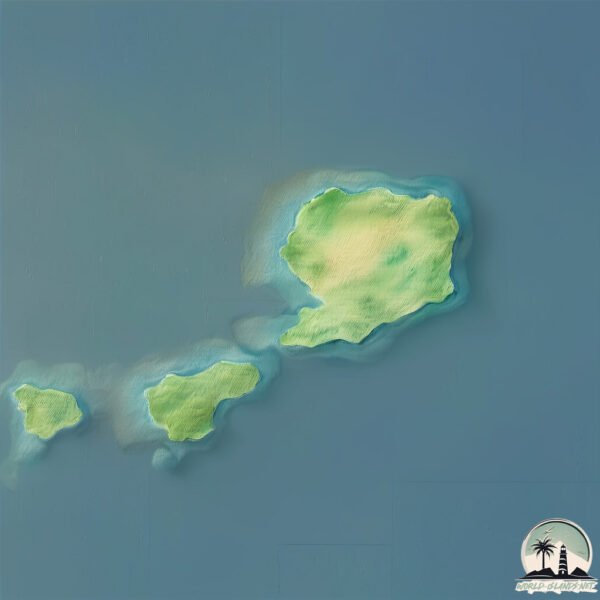Welcome to Mangere , a Temperate island in the South Pacific Ocean, part of the majestic Pacific Ocean. This guide offers a comprehensive overview of what makes Mangere unique – from its geography and climate to its population, infrastructure, and beyond. Dive into the details:
Geography and size of Mangere
Size: 1.154 km²Coastline: 7.2 kmOcean: Pacific OceanSea: South Pacific OceanContinent: Oceania
Mangere is a Small Island spanning 1.2 km² with a coastline of 7.2 km.
Archipel: Chatham Islands – A remote group of islands east of New Zealand, known for their unique flora and fauna and distinct Moriori culture.
Tectonic Plate: South America – A major plate covering the South American continent and part of the Atlantic Ocean, known for the Andes mountain range and significant seismic and volcanic activity.
The geographic heart of the island is pinpointed at these coordinates:
Climate and weather of Mangere
Climate Zone: TemperateClimate Details: Temperate Oceanic ClimateTemperature: Warm Summer
Climate Characteristics: Known for its moderate year-round temperatures with ample rainfall and no dry season. Warm summers are characteristic.
Topography and nature of Mangere
Timezone: UTC+12:45Timezone places: Pacific/ChathamMax. Elevation: 99 m Mean Elevation: 43 mVegetation: Evergreen Broadleaf ForestTree Coverage: 15%
The mean elevation is 43 m. The highest elevation on the island reaches approximately 99 meters above sea level. The island is characterized by Plains: Flat, low-lying lands characterized by a maximum elevation of up to 200 meters. On islands, plains are typically coastal lowlands or central flat areas.
Dominating Vegetation: Evergreen Broadleaf Forest
Vegetation: 3 vegetation zones – Moderately Diverse Island
Infrastructure and Travelling to Mangere
Does the island have a public airport? no .
Does the island have a major port? no .
The mean population of Mangere is 1 per km². Mangere is Uninhabited. The island belongs to New Zealand .
Continuing your journey, Chatham is the next notable island, situated merely km away.
Chatham Island snipe on Mangere Island, March 2013
Footage of a Chatham Island snipe foraging on the forest floor in "Robin Bush" on Mangere Island (Chatham Islands, New ...
Chatham Island snipe on Mangere Island, March 2013
Footage of a Chatham Island snipe foraging on the forest floor in ...
Footage of a Chatham Island snipe foraging on the forest floor in "Robin Bush" on Mangere Island (Chatham Islands, New ...
Forbes Parakeet on Mangere Island, March 2013
Footage of a Forbes Parakeet foraging for seeds on the forest floor in ...
Footage of a Forbes Parakeet foraging for seeds on the forest floor in "Robin Bush" on Mangere Island (Chatham Islands, New ...
Chatham Island's Lone Policeman (Global Documentary) | Real Stories
Take a tour with the islands' sole policeman, meet the Air Chathams' ...
Take a tour with the islands' sole policeman, meet the Air Chathams' chief pilot who owns a 1950s flight simulator the size of a ...
New Zealand is classified as Developed region: G7: Group of Seven – Major advanced economies, including Canada, France, Germany, Italy, Japan, the United Kingdom, and the United States. The level of income is High income: OECD.
News – Latest Updates and Headlines from Mangere
Stay informed with the most recent news and important headlines from Mangere. Here’s a roundup of the latest developments.
Loading...
Please note: The data used here has been primarily extracted from satellite readings. Deviations from exact values may occur, particularly regarding the height of elevations and population density. Land area and coastline measurements refer to average values at mean high tide.

